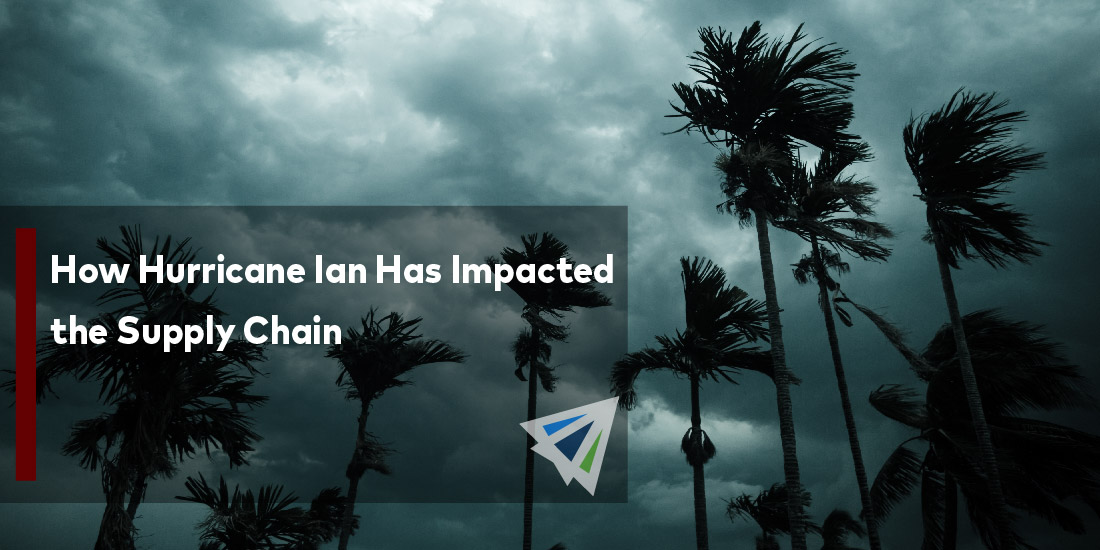How Hurricane Ian Has Impacted the Supply Chain
Hurricanes are terrifying. Not only do they wreak havoc to the livelihoods of everyone set at the location they strike, but they also send ripple effects through every industry where their hits land. Those along the southeast coast are often the most affected by severe hurricane strikes.
The most recent—Hurricane Ian—is one of the strongest hurricanes to have ever hit the country, and it is halting operations across the supply chain industry in Florida. This represents yet another complication added to an already congested and strained supply chain.
Currently, Jacksonville, Florida’s largest container port, is shut down. Operations ceased on September 28 and will remain shut down until the Coast Guard authorizes them to resume. At this point, there’s no clear indication as to when things will reopen, because the industry is still in the early stages of assessing damages. Miami and Tampa are in similar situations, either having stopped operations all together, or having implemented severe restrictions to port activity. Regardless, the effect is the same. The ocean ports have come to a near standstill on the southeast side of the U.S. as the Coast Guard and port officials assess damages and devise a strategy for the repair and resume of port operations.
The storm moved northward towards Georgia and regained a hurricane status when it made landfall between the ports of Charleston, NC and Savannah, GA. Currently, the estimated damages caused by the storm are nearing $60 to $70 billion, though that number is expected to rise. This puts Ian in sixth place of the most costly storms to have hit the country.
Effects of Hurricane Ian on the Supply Chain
The storm impacted nearly 2,800 manufacturing firms in aerospace technology, automotive components, heavy machinery, chemicals and plastics, and nearly 7,000 health care producers in the pharmaceutical and medical devices industries.
In addition to this, nearly 4,500 warehouses, factories, and distribution centers that distribute 74,000 parts ranging from electronics to chemicals were in the hit zone of the hurricane. These companies have roughly $20 billion at stake from the storm.
Another field at risk is the produce industry. Southern Florida produces about 70 percent of U.S. citrus fruits. The high winds and devastating flooding from this storm could blow down trees before they’re able to be harvested, causing not only major issues for this year, but for future harvests as well.
Tons of vessels are being held at origin and not departing on schedule until it is deemed safe to travel, and dangerous waters are calmed for steamship lines to resume activity to the southeast side of the U.S. Air freight operations have even been suspended by Delta until storm conditions clear up, leaving loads of cargo sitting on port grounds or in terminals.
In Summary
The gist of it is that this hurricane has had a devastating toll on the supply chain industry, ranging from manufacturing and producing, to warehousing and transportation. Trucks, rail lines, ocean ports, and airports have all been put on halt until conditions calm, and at this point, it’s unclear how the damage done from the storms will impact freight efficiency over the coming weeks and months.
If you have any questions about how your freight can move out of Florida, or when you can resume regular operations and are looking for tips in the meantime, please don’t hesitate to reach out to one of our team members! We would love to have a conversation and help your team out in any way we can.
